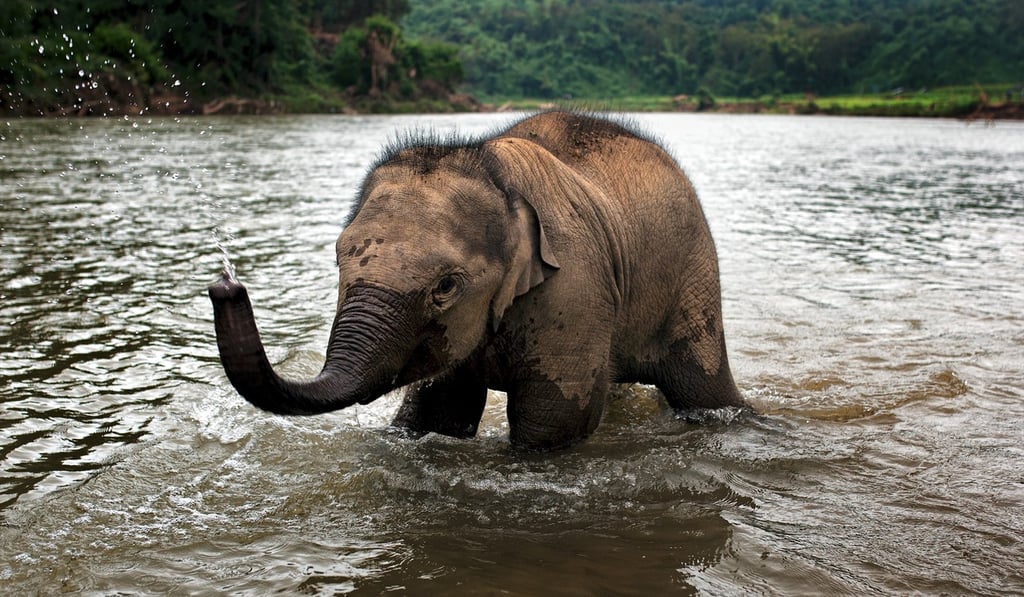Elephant tourism in Laos: how one ecotourism start-up provides the entertainment without the exploitation
At MandaLao Elephant Sanctuary & Tours, visitors can walk with elephants, feed and splash them – but they can’t ride these retired work animals, whose back-breaking days of hefting heavy logs and howdahs full of tourists are over

On a narrow path that winds through a grove of banyans and giant ferns by a babbling brook, a fallen tree lies across a muddy bank. Mr Kit takes an immediate interest in it, peeling off from his small party of wanderers to investigate. He nudges the heavy log with his head. It doesn’t budge, so Mr Kit decides to straddle it instead, rubbing his belly against it to scratch an itch.
He dismounts and breaks into a run, then stumbles and skids down the slippery riverbank. He is unhurt and begins to wallow in the thick mud, before clambering back to his feet, caked in muck, and dashing off to rejoin his mother.
Mr Kit is a 16-month-old Asian elephant calf and duly behaves like a kid. He’s vigorous, rambunctious and mischievous. One minute he’s on his best behaviour, sucking milk from his mother, Tongkhun, under a strangler fig. The next, he’s off for some more devil-may-care hijinks.
“The baby boy is pretty hysterical,” says Michael Vogler, an American conservationist who is one of the young elephant’s handlers. “He’s quite a trip.”

He’s also quite a draw at MandaLao Elephant Sanctuary & Tours, run by Vogler and a few other budding entrepreneurs. The ecotourism start-up offers refuge for six retired work elephants, and Mr Kit. It enables visitors to get up close and personal with the beasts in northern Laos, outside the ancient royal capital of Luang Prabang.
Tourists can walk with the sanctuary’s elephants on trails in countryside dotted with vegetable plots and little villages of bamboo shacks. They can splash water and moisturising herbal sprays on them at bathing time in the Nam Khan River. And they can feed them plantains (a banana-like fruit) and pose for pictures with them. But they can’t ride them.